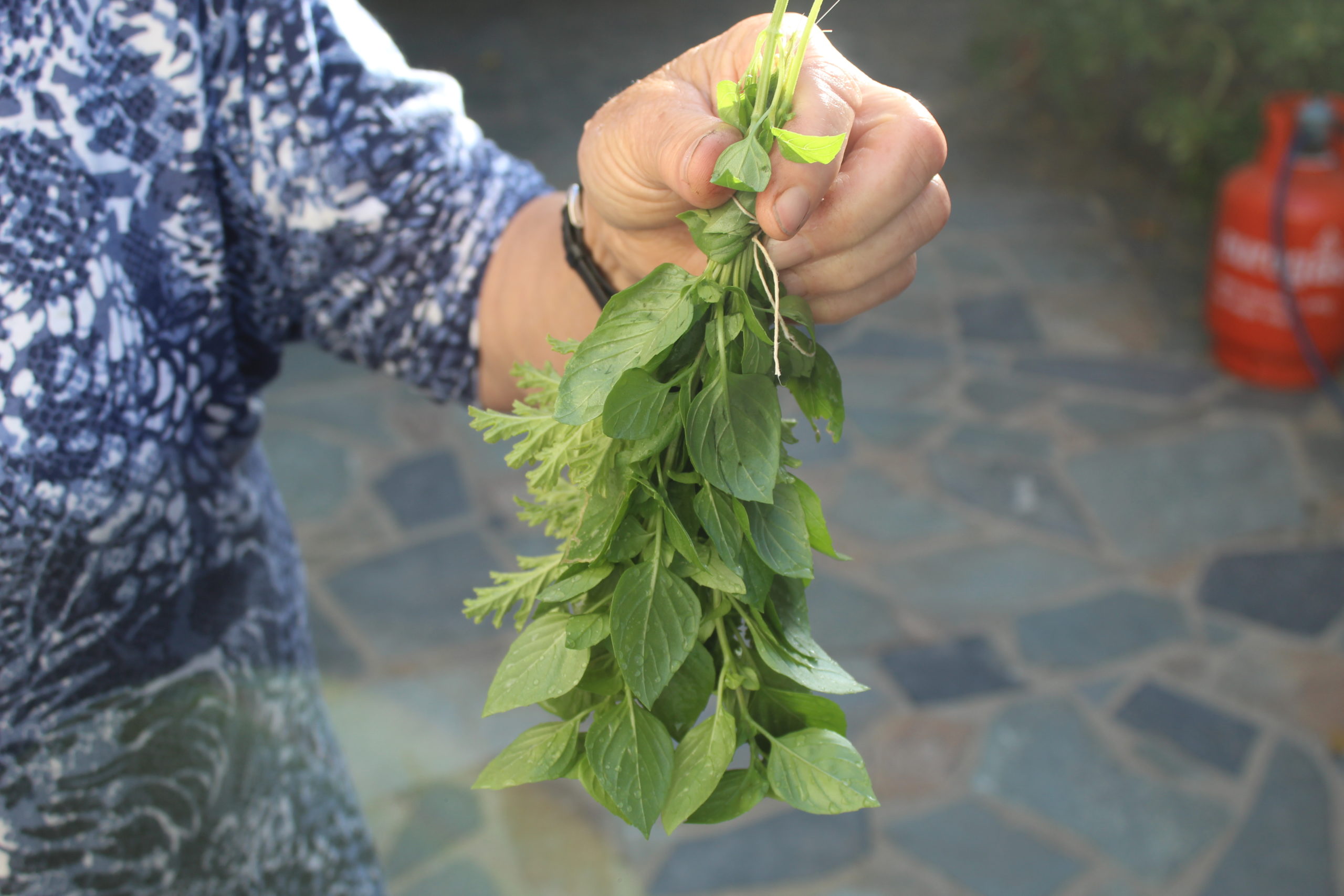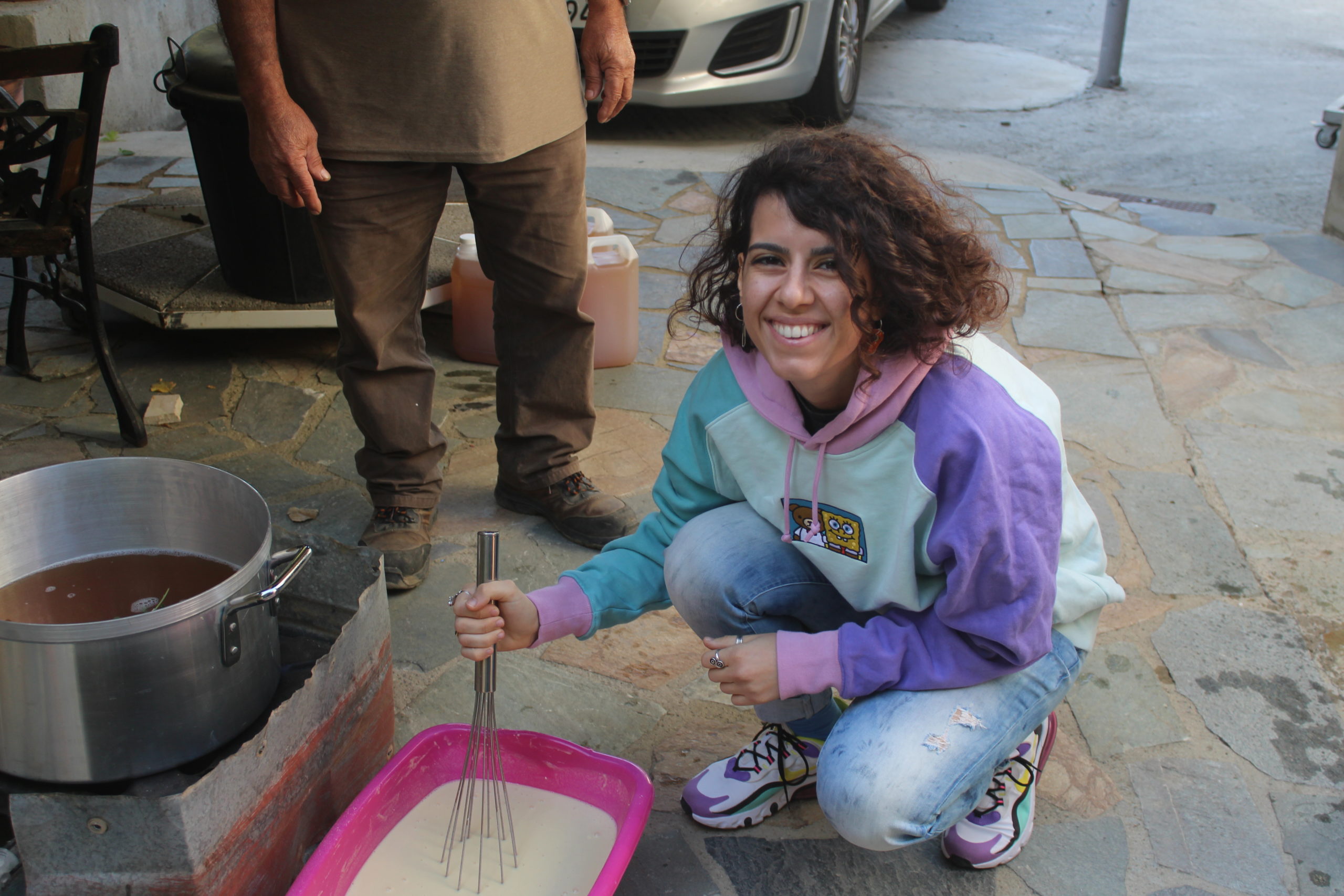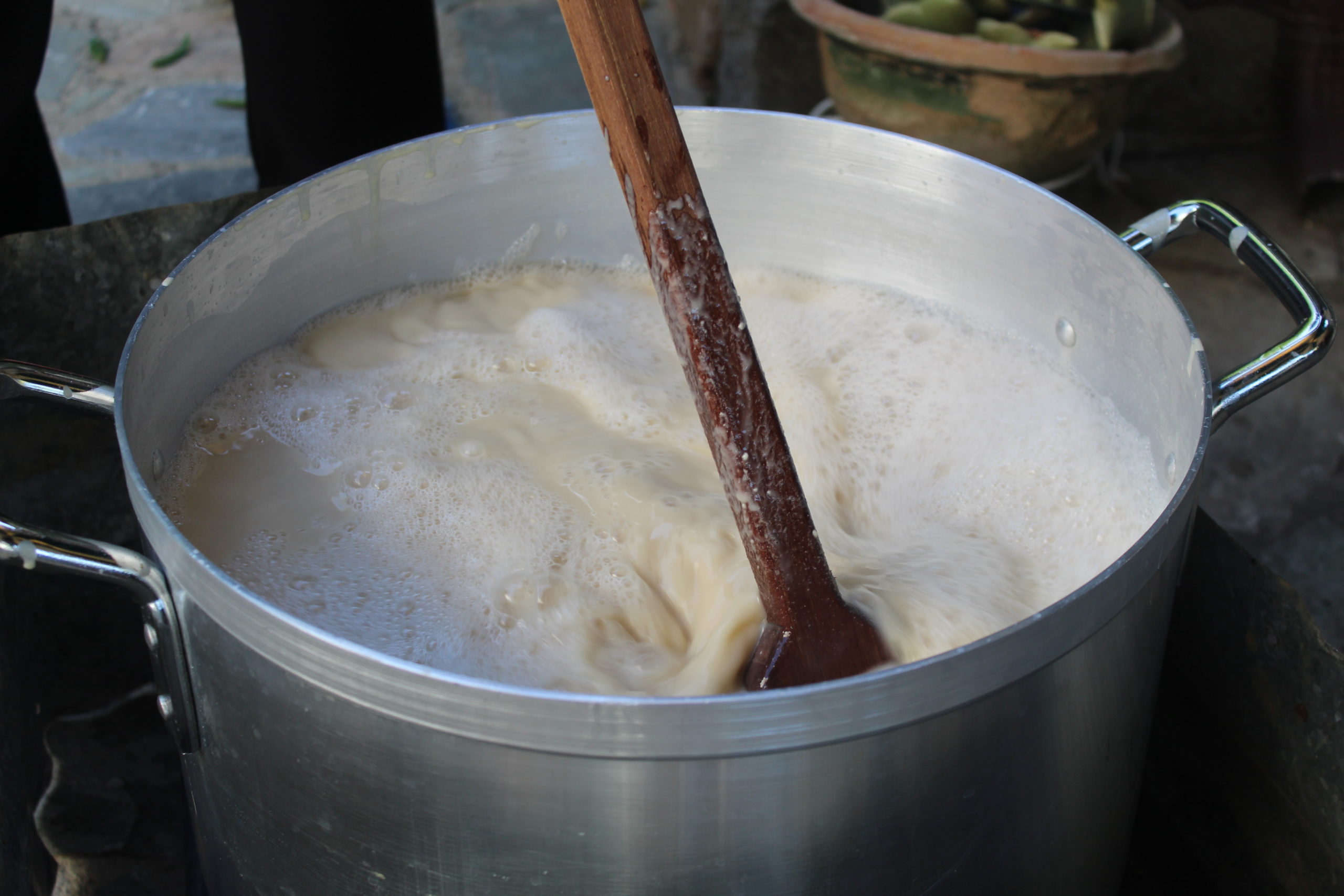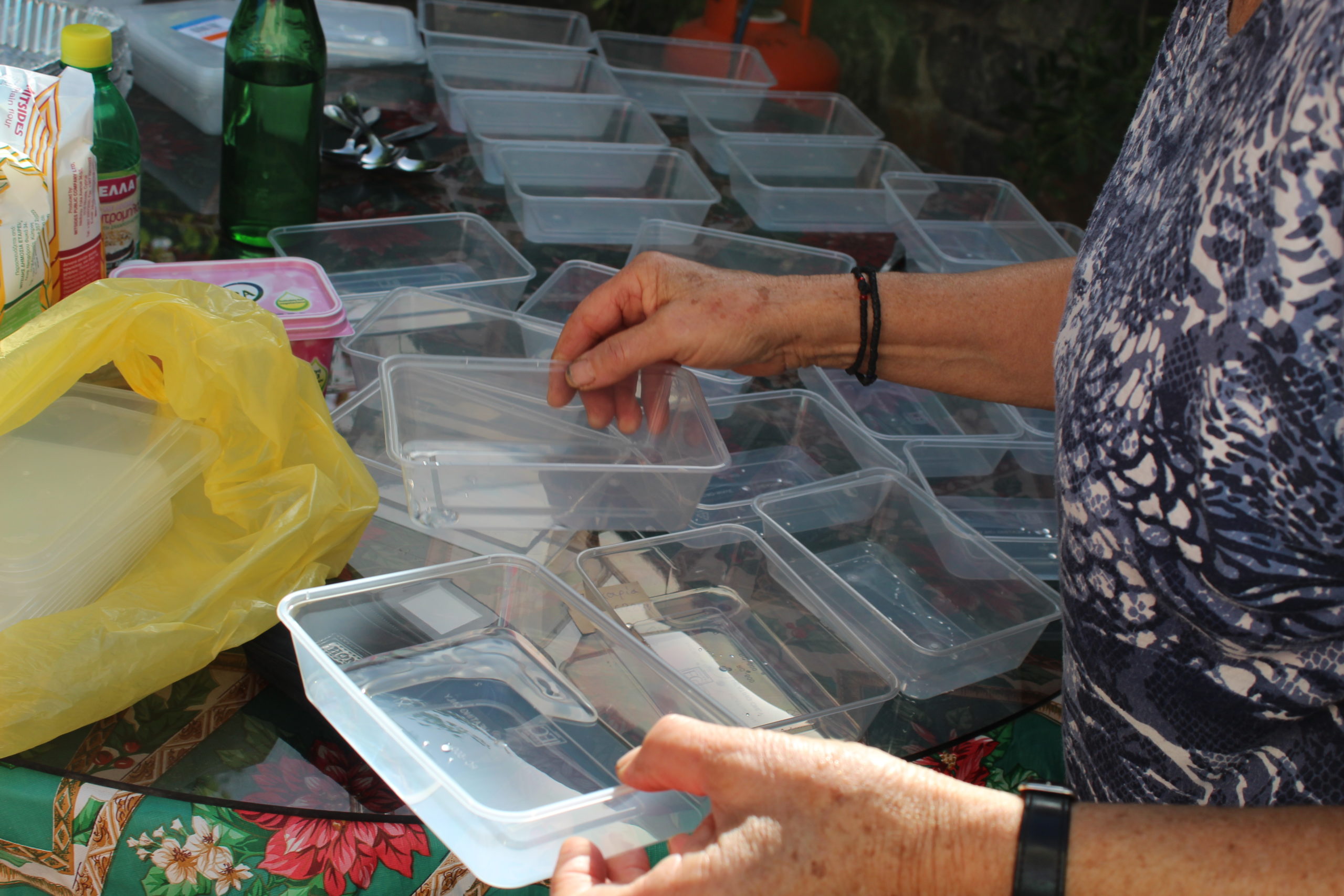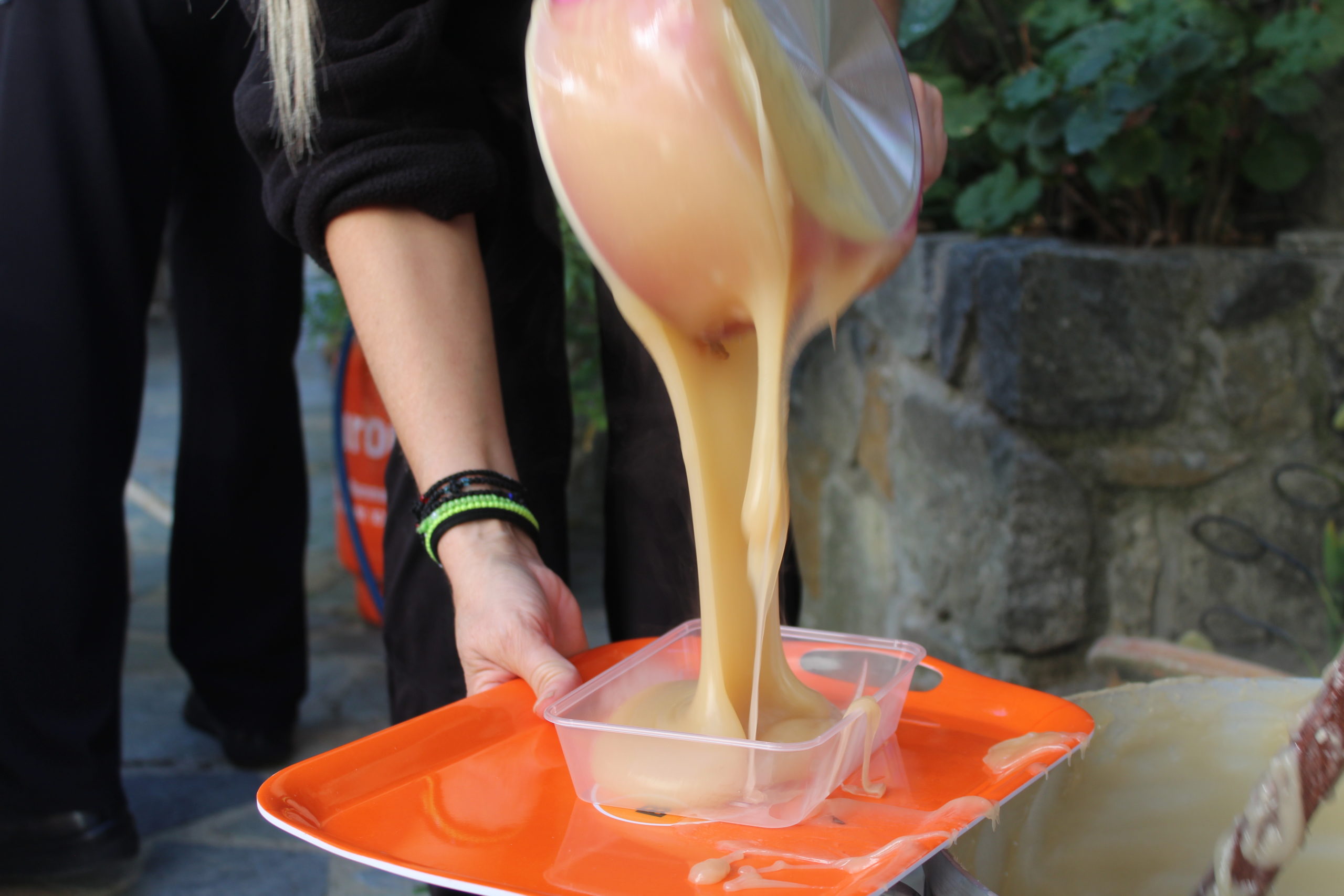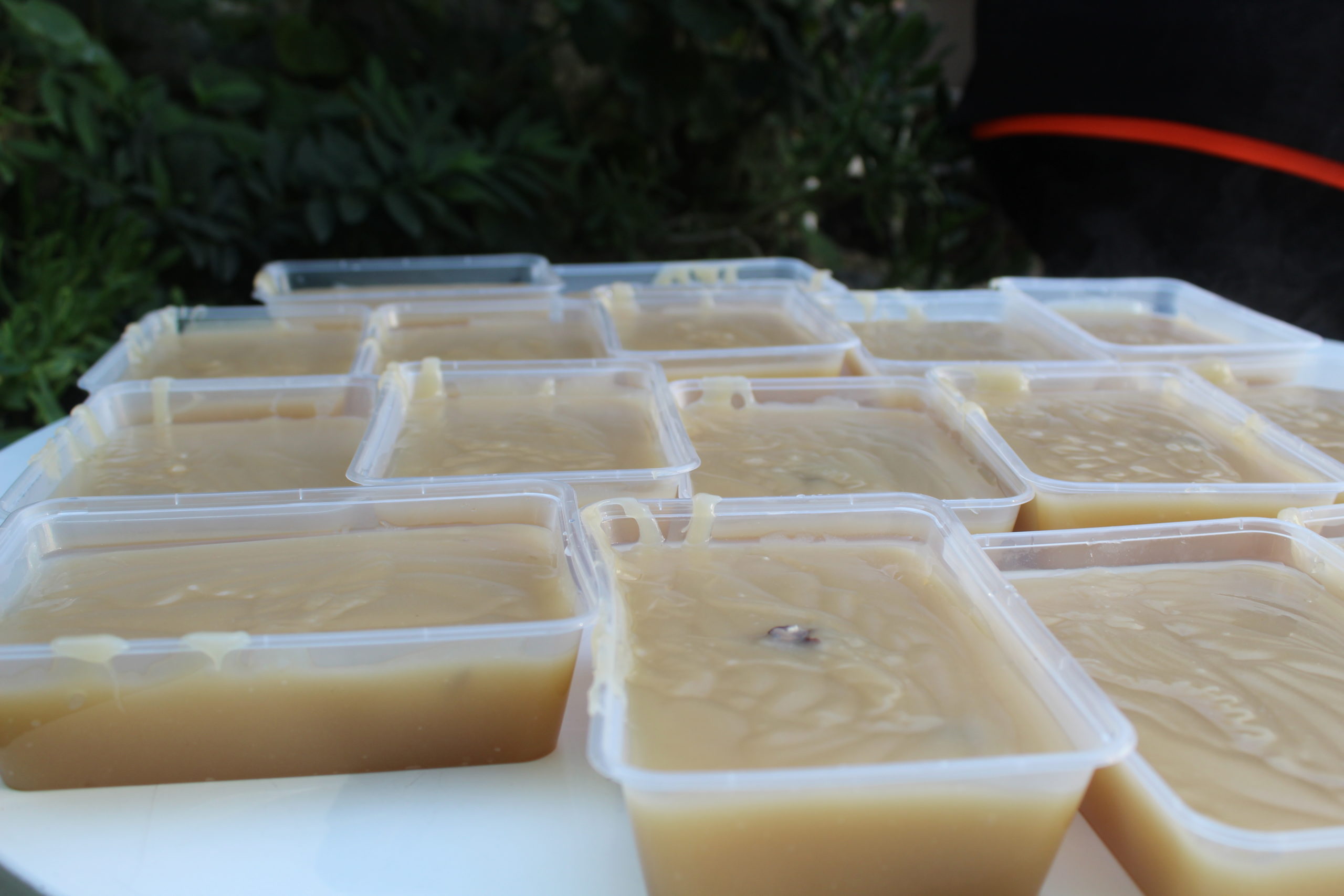In order to make palouse, grape juice from red or white varieties is used.
Once the grapes are crushed and their juice is collected, it is strained through a cheesecloth into a large cauldron and brought to a simmer. This traditional cauldron, known as charjin in the Cypriot dialect, is made of tinned copper.
As the juice begins to boil and foam, a special type of white soil called asproi – rich in lime and sourced from untouched mountain areas – is added. This soil causes the juice to froth, helping to lift and remove any impurities or unwanted elements as they rise to the surface with the foam. The more soil is added, the sweeter the Palouse becomes. The skimming process continues until no more foam forms. The juice is then left to cool overnight, allowing any sediment to settle at the bottom. The next day, it is carefully strained again into a fresh cauldron, ensuring the sediment remains undisturbed.
At this stage, the juice – now referred to as must – is measured by the cup and transferred to a new cauldron for a second boil. A small bouquet of a very fragrant plant called Kiouli (Pelargonium graveolens), is added for its added, delicate aroma. Some also like to incorporate a touch of carob syrup for extra depth of flavour. Once boiling, a portion of the must is removed and used to dissolve one tablespoon of flour per measured cup. When the flour is fully blended with no lumps, the mixture is poured back into the cauldron and stirred continuously to prevent it from sticking or burning. It is cooked until it thickens into a smooth, creamy, and gelatinous consistency. At this stage, the kiouli is removed, and additional aromatic ingredients such as mastic, rose water, or citrus blossom water can be added.
To check if the palouse is ready, a spoonful is spread onto a plate and left to cool. If it lifts easily without sticking, it is done. If it remains sticky, the cooking process must continue to ensure proper texture and longevity as undercooked palouse spoils quickly when used to make sousouko (see article for sousouko).
Once ready, it is poured into trays and garnished with crushed almonds or walnuts. One of the simplest yet most beloved traditions is savouring the warm palouse left at the bottom of the cauldron – arguably my favourite part!



